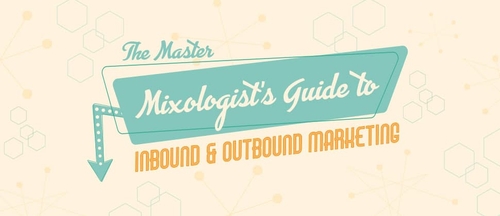Growing up in Oklahoma, we had a common saying: “I’m fixin’ to get ready.” In other words, I’ve got somewhere to go or something to do, but not quite yet – so in the meantime I’m doing something else, which may or may not have anything to do with what I’m doing later. The buying cycle for your customers is a lot like that today, too.
According to SiriusDecisions, as much as 70 percent of the buyer’s journey is complete before they reach out to sales. So, a lot of your future customers are fixin’ to get ready – but how would you know, unless they call or email you every time they’ve made progress towards making a purchase. The more complex the purchase is, and the longer the sales cycle, the worse this situation gets for sales and marketing departments. Sales may spend time calling a visitor over and over who filled out a form on your site. If the visitor is only in the initial research stage of their buying process, it’s a waste of time for your sales teams, and irritates potential customers.
A marketing automation tool, combined with an effective content marketing program, can be a godsend for marketing, sales, and buyers themselves. By tracking what visitors do over time and assigning weights, or values, to each activity, these tools can help spur follow up only when it’s really warranted, and deliver the right information about your company and its offerings to your prospects to educate them over time.
Here’s why marketing automation helps move your prospects down the sales funnel:
It’s more personal. Marketing Automation allows you to customize the content you send out based on your prospects’ actions and behaviors, from clicking and opening previous emails, to pages visited, the length of time between visits, and more. For example, you can shift a prospect who visits important pages and returns to your site to a “very interested” list and send them one set of messages more focused on product details, while a prospect who interacts less can be sent more general information.
Communicate more with less effort and scale up easily. Once set, your marketing automation program works with little or no input from you, depending on “triggers,” or specific actions that the prospect takes over time to send out new pieces of content. This ability to work without intervention by your marketing or sales staff lets your teams focus on other tasks until it’s time to follow up directly. Not only that, but an automated nurturing campaign can market to as many prospects as you wish, only limited by the number of interested visitors you get in your (virtual) door.
Learn more about your visitors and sales prospects. Without a marketing automation solution, companies wait until a visitor raises their hand, usually by filling out a contact form on their website. After an initial discussion, they may wait around again until something similar happens. You miss out on all of the steps your prospect is taking to educate themselves in the meantime, doing their own research, learning more about your company, and so on.
With marketing automation tools, you get much more depth of information. You learn about your potential sales prospects before they ever fill out a form (with tools like Visitor ID), after they fill out a form, and in every interaction in-between. Want to be informed every time a known site visitor returns to your product details pages? Now you can, and your sales team can automatically be sent a task to follow up.
Think in terms of campaigns, not one-off tactics. For many companies, the email blasts, case studies and white papers, videos, website pages, and other pieces they send out to all stand on their own with no central way to tie them all together. The fact that you can put strings of emails, landing pages, and content together in a cohesive program naturally pushes you to build entire campaigns of activity focused on a theme in your marketing automation tool. Often, this helps organizations rethink their overall marketing programs and start to focus more on the prospective customer’s needs along their buying path.
Justify your marketing investment. Being able to see the ways a visitor interacted with you to become a lead, then a sales opportunity, and eventually a successfully closed deal, is powerful. It can help you understand the return on investment (ROI) of your marketing efforts, find out which channels or activities to do more of, and those you might be able to cut back. Not only that, but you’ll be able to point out to your sales teams that yes, marketing did in fact have 38 touches with that visitor over the buying cycle and helped make that win happen just as much as they did.
Want to learn more about marketing automation programs, and why they are so powerful combined with content marketing? Let’s talk.








